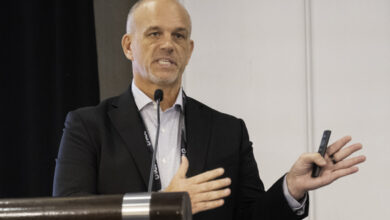Why people don’t follow procedures: a human performance perspective
New view of safety, accountability looks beyond enforcing procedural discipline to causes of non-conformance and how to manage variability in job execution
By Marcin Nazaruk, Baker Hughes
“Failed to follow procedure” is a common root cause from incident investigations in the oil and gas industry. Such a finding reinforces a belief that procedural conformance is a source of safety and success. Therefore, the apparently obvious conclusion is we need to get better at enforcing procedural discipline to prevent such incidents in the future.
After all, procedures represent the best way to carry out activities. Experts develop procedures to guard against the errors and mistakes of fallible human operators who may have limited competence and experience. Compliance should be enforced to overcome workers’ tendency to make errors and deviate from rules, which are seen as negative personal decisions independent of the environment and constraints in place.
Therefore, corrective actions may include reinforcing expectations, sending out reminders and “holding people to account.” The expectation is that fear of consequences will sufficiently deter people from breaking the rules.
Does it sound familiar?
The approach described above is what psychologists researching procedural discipline call the “old view,” or the “backwards-looking view,” of safety and accountability.
So, what does the alternative “new view” look like?
Procedural violation may include skipping steps, not using the procedure or doing something different from what is outlined in the document. Possible answers to the question of “What does unintentional violation mean to you?” could include “person made a mistake, didn’t know the procedure, or didn’t mean to do it.”
How does it compare to the “intentional violation”? Typical answers might be “the person did it on purpose, meant to do it, knew not to and did it anyway.” However, did they wish to cause harm through their actions, as in case of sabotage? Or, were they trying to get the job done? If the intentional violation has a positive intent behind it, we would want to discover what increases the chances of such violations.
Causes of non-conformance
One study surveyed nearly 400 operators in the oil and gas industry and listed 20 reasons behind non-conformance in six categories, some of which are outlined below:
• Usage, 72% said. People prefer to rely on their skills and experience.
• Accuracy, 45% said. Procedures were out of date.
• Practicality, 62% said. If the procedures were followed to the letter, the job couldn’t get done on time.
• Optimization, 48% said. Procedures do not describe the best way of carrying out activities.
• Presentation, 48% said. It’s difficult to find the information you need in a procedure.
• Accessibility, 50% said. It’s difficult to locate the right procedure.
If the intent is positive and there are genuine reasons underpinning non-conformance, does using the word “violation” to describe such situations prompt us to uncover what’s behind it? Perhaps not as much, due to the negative connotations of this word, indicating guilt and malicious intent.
Professor Sidney Dekker from the Griffith University in Australia, an expert in procedural adherence, offers the following insight: People in operational worlds knowingly adapt written guidance and have to do so to bridge the gap between prescriptive routines and actual work in worlds of imperfect knowledge, time constraints and infinite variation.
Calling such adaptations ‘‘violations’’ already implies a moral judgment about who is wrong (the worker) and who is right (the rule). It is easy to show in hindsight which procedures would have been applicable, available, workable and correct for a particular task (says who, though?), but such overestimations of the role of procedural non-compliance in the wake of events conceals the real operational dilemmas faced by people.
So what are those dilemmas and related adaptations that we don’t see if we conclude that non-conformance was a root cause of an incident?
Imagine the following scenario: A truck driver arrives at an operational site to deliver equipment. The site has an entrance gate and an exit gate with one-way traffic. Behind the entrance gate is 20-ton equipment blocking the way, and the driver is instructed by an engineer on site to enter through the exit gate instead, going against the traffic direction.
If you put yourself in the shoes of this truck driver, what is the dilemma they are facing at that moment in time?
They can follow the instructions given by the engineer, but that would mean they would break the site’s one-way traffic rule. They could try to insist to move the equipment blocking the entrance, but it would have a range of undesired implications for the driver and the site management.
From the point of view of the driver, there could be a conflict with the engineer who gave the instruction, cost of waiting (truck, equipment, manpower), frustrated client, delayed next delivery, or pressure from the supervisor to sort it out.
From the point of view of site management, it could include the cost of changing the schedule, arranging a crane on a short notice, interrupting a high-pressure test taking place nearby, etc.
As you can see, the driver’s non-conformance is not happening in a vacuum but rather in the context of many other people trying to achieve their objectives. The rule was static and did not account for how the work was actually planned, coordinated and executed by different teams. It also did not account for the space on site and constraints they were facing. This dynamic gives rise to performance variability – small or big variations in how tasks are completed depending on the situation.
If you were this truck driver, what would you be more likely to do: use the exit gate or insist on removing the equipment? There may be other options, too.
If you chose to use the exit gate and there was an incident while using that gate, how helpful would the investigation conclusion be that you didn’t follow the rules? This scenario takes us to the new view of procedural conformance.
Large organizations manage thousands of rules, procedures and work instructions. Those documents, pocket cards and posters cannot possibly account for all eventualities in the dynamically changing reality of everyday operations.
Organizations must monitor and understand the reasons behind the gap between procedures and practice.
Professor Dekker adds: “Circumstances change, or are not as were foreseen by those who designed the procedures. Safety, then, is not the result of rule following; it is the result of people’s insight into the features of situations that demand certain actions and people being skillful at finding and using a variety of resources (including written guidance) to accomplish their goals.”
Professor Andrew Hale from the Safety Science Group of Delft University says in a paper on non-conformance: “‘Violation’ is therefore seen as essential in specific cases where the rule does not match the reality and is otherwise shunned as a pejorative term to demonize unsuccessful innovation and adaptation. ‘Variability’ driven by human adaptation to diversity is inevitable and valuable and must be managed and not suppressed.”
The message here is not that procedures are not important or that they don’t have to be followed.
Written instructions are one of many tools available to employees and have their strengths and weaknesses, like any other tool they use.
Managing variability
The question then becomes how to manage the inevitable variability stemming from adaptations in a way that reduces the risk and increases the effectiveness.
First, organizations must monitor and understand the reasons behind the gap between procedures and practice. Instead of policing, catching and “holding culprits to account,” leaders need to proactively seek and welcome situations where people don’t follow procedures. Each such situation reveals a potential mismatch between how the job was imagined to be done and the operational reality. Every such situation is a proactive opportunity to learn and improve.
However, in order for operators to openly admit such situations, they need to trust their leaders that such an act of speak-up will be met with genuine interest and appreciation of what is behind the difficulty, rather than a written warning.
Paradoxically, the “police and punish” approach described earlier is intended to reduce instances of non-conformance but actually leads to an opposite effect. Blame reduces trust. Trust is the psychological foundation of speak-up and openly discussing issues behind non-conformance. If workers don’t talk about their challenges, then leaders are not aware of the problems and cannot address them in a timely manner. Issues and non-conformances accumulate over time but are not visible to managers until an event.
Secondly, a step-by-step standard operating procedure (SOP) is just one type of written guidance available. Others may include checklists, schematics or even photos and videos. The UK’s Health and Safety Executive suggests asking the following questions to determine if SOP is the best tool for a job:
1. The activity is safety critical (it has potential high-severity outcome);
2. The activity is highly complex;
3. The activity is rarely performed;
4. The end user is inexperienced.
If the answer to any of these questions is yes, then SOP may be appropriate. If the answer is no, then simpler job aids may be more effective.
Thirdly, let’s consider the usability of procedures. If I asked you to visit an operational site, meet an operator before they start a job and, using a stopwatch, ask them to 1) identify, 2) access, 3) open, and 4) print the required procedure, how much time would it really take, accounting for walking to the computer, logging in to the database, typing in keywords, etc?
One minute, five minutes, 10 minutes or more? Is the document up-to-date? Is it formatted to make it easy to read and understand? How easily and quickly can the end user report a problem with a procedure?
These questions lead to the realization that the challenge does not lie in a single procedure but rather in the document management system and underpinning processes.
Fourth, execution of procedures requires competency. Imagine what would happen if you asked a random person on the street to execute a “fracking gun procedure.” They would not be able to do it, as they would not understand the instructions.
Therefore, the UK regulator requires integration of procedures into a training and competency management system. People are trained on executing procedures, are audited, receive feedback and, when procedures change, they are re-trained.
Finally, developing highly usable procedures incorporating human factors requirements is a technical competency outlined in industry guides. The competency of co-developing procedures with end users using techniques such as task analysis should be an integral part of all individuals involved in the process, including engineers, safety professionals or operational leaders.
There are many other considerations for effective management of procedures that can be found, including on the UK HSE’s human factors web page. DC




